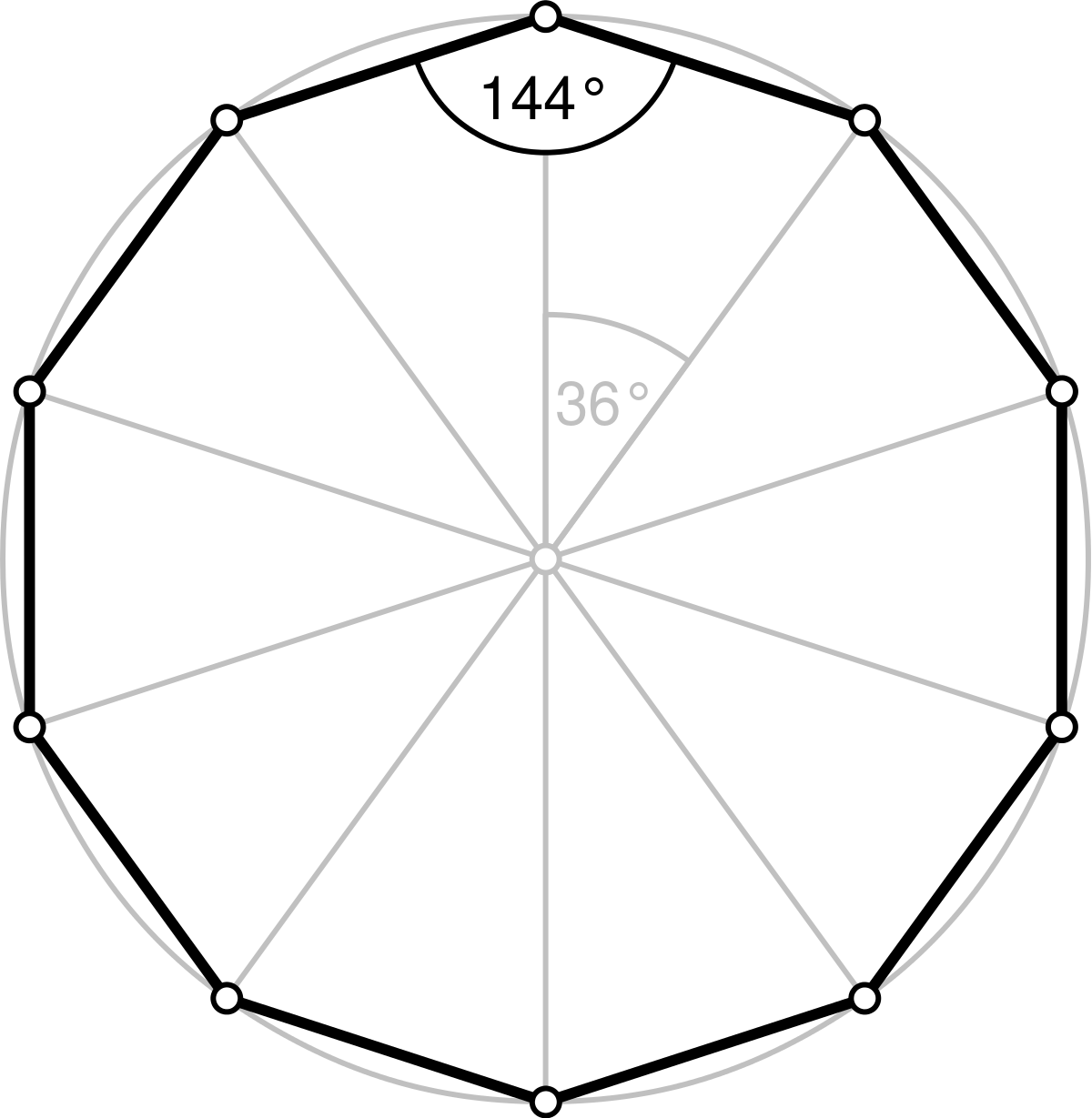1. For this question, we are provided that each of the sides of the polygon is the same, and that it has 10 sides. Because of this, the specified figure is a regular decagon, with angle measures of 144 degrees.
To start, we go online and google regular decagon, to find a suitable image/graph (visualization is key). This is the one I found:

Let the topmost point be \(A_1\), and we label all points from \(A_1\) counterclockwise, getting \(A_4\) and \(A_8\). Now, we connect \(A_1\), \(A_4\), and \(A_8\), forming an isoceles triangle. Taking the Trapizoid \(A_1\)\(A_2\), \(A_3\), \(A_4\) into consideration, we draw the perpendicular from \(A_3\) to segment \(A_1 A_4. \), point of intersection being X. From this, we find that the angle \(A_3 A_4 X\) is 90 degrees, so the angle \(A_4 A_3 X\) has measure of 144-90, or 54 degrees.
This means that angle \(A_3 A_4 X\) is 36 degrees, and that angle \(A_1, A_4 A_8\) is 90 degrees-36 degrees, or 54 degrees. By the same reasoning, \(A_4 A_8 A_1\) is also 54 degrees. This means that the angle measure of \(A_4 A_1 A_8\) is 180-54*2, or 180-108, 72 degrees. Thus, to move point \(A_4\) to \(A_8\), we rotate around\( A_1\) by 72 degrees.
Answer is 72 degrees.
2. Unfortunately, I do not know how to do this question because I am very unfamiliar with dilations. Good Luck though!.